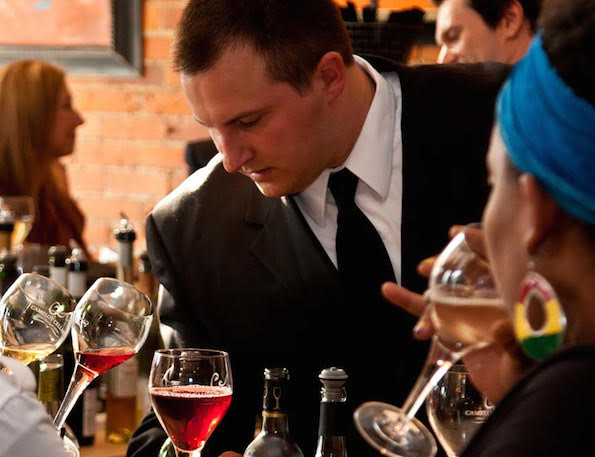
Forget a week. In Ohio, wine gets a whole month.
Since being signed into law by Gov. Kasich in 2012, June is deemed Ohio Wine Month. With over 243 wineries in Ohio, making it the seventh largest wine producer in the country, it’s evident there’s more than beer to boast in the Buckeye state.
“We’re in the middle of craft beer heaven so we do everything that we can to promote our wineries,” said Janine Aquino, owner of Camelot Cellars.
Camelot Cellars is, like many wineries in Central Ohio, an urban winery, meaning that juices are sourced from elsewhere and fermented on premises.
Aquino, a fourth generation wine professional originating from New York, said Central Ohio typically doesn’t have the ideal temperature for growing grapes as other regions of the state and country do.
Robin Coolidge is the owner of urban Wyandotte Winery — Ohio’s first winery — in Columbus, and RockSide Winery and Vineyards in Lancaster. Coolidge said RockSide has three and a half acres of vines, with 400 new vines put in the ground just a couple weeks ago.
RockSide primarily grows French-American hybrid grapes. The fruits are winter hardy given their American roots, but have the drier, full-bodied flavor of their European counterparts.
Coolidge wasn’t born into the wine business like Aquino was. Instead, he fell in love with the trade while he was still in the IT business. While on a conference trip in San Francisco, he and his wife visited Napa.
“I wasn’t a wine drinker and fully expected to be bored out of my mind, but ended up having a great time,” he said.
Coolidge said he was especially interested how, for example, a Cabernet Sauvignon has distinct elements that make it a Cabernet Sauvignon, but can still be unique to each winery depending on where it was grown, who made it and how
“There was something different about each of these wines and that fascinated me,” he said.
After making wine from kits, then juices and fruits, Coolidge saw winemaking as not only a passion, but also his way out of IT and into being a business owner.
Tony Klausing, owner of urban Good Vibes Winery in Westerville, also previously worked in IT. He too had traveled to wineries with his wife and wanted to bring the experience, and literal good vibes, to Ohio.
“We gave it the name because we wanted it to be a fun place,” Klausing said. “We have music on weekends, but the main draw is the wine.”
The wines are musically inclined as well, each named after some of the couple’s favorite oldies songs. They’d listen to oldies stations and search for songs with “wine,” “red” or “white” in the title, aiming to hit every major band. Their black raspberry wine is named “Hang on Sloopy” in an Ohio State homage.
Good Vibes is located in Westerville’s oldest industrial building, previously occupied by a drugstore. Westerville was a dry town until 2007, and Klausing said business has been flowing ever since.
“The city has really experienced a resurgence, I believe, due to allowing alcohol,” he said. “We have restaurants, chic shops. We don’t have chain restaurants, chain anything.”
Janine Aquino echoed the focus on locality when it comes to wine across Ohio.
“We have a great product and you don’t have to go somewhere else to get it,” she said.
But with exponential increase of wineries in Ohio, naturally comes competition.
“It’s more of a competitive environment than it used to be,” said Robin Coolidge. “The only thing bigger would have to be craft brewing, which is just exploding.”
With the brewing boom, some wineries are feeling the pressure to obtain an A1A liquor license on top of their winery license, meaning they can serve other alcohol on premises.
Coolidge, whose RockSide does serve beer, said it allows them to appeal to wider audiences, such as the wine-loving wife and her beer enthusiast husband.
But not all wineries are willing to give in.
Jackie Trexel of urban Quail Crossing Cellars Winery said serving beer would be “a whole different paradigm shift.”
“I want to be a winery and be able to provide new and different product from a wine concept, not a bar concept,” she said.
Beer or no beer, an advantage of the winery boom several owners pointed out was the ability to foster a community. With short distances between wineries, trails such as the Capital City Wine Trail, consisting of twelve local wineries, are now possible.
“As long as we’re all making good wine, if another winery opens near us the perception of wineries in Ohio for everybody goes up,” Coolidge said.
Trexel echoed the sentiment of camaraderie.
“I think that the more wineries the better,” she said. “I don’t think anyone is in competition with each other. I think we help each other.”












